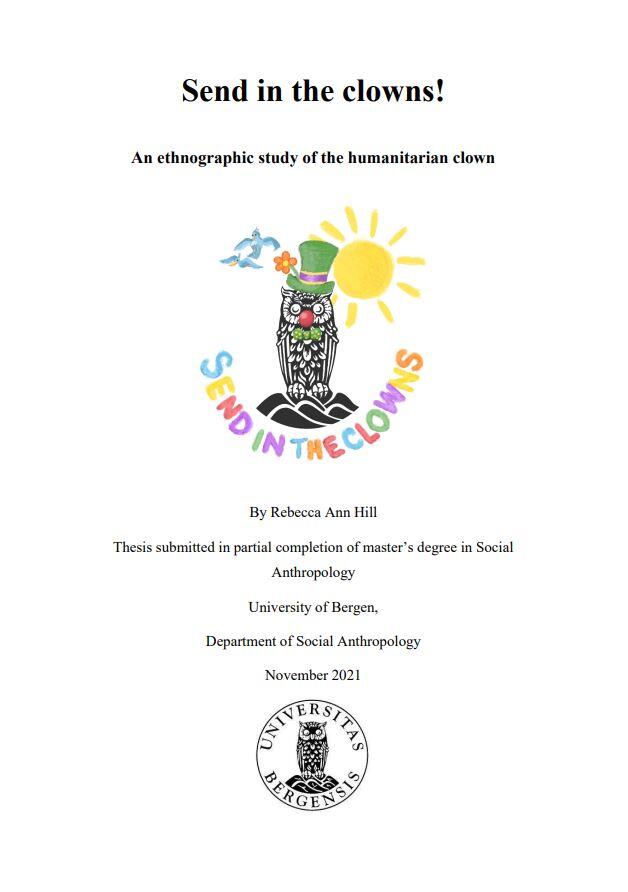Send in the clowns! An ethnographic study of the humanitarian clown
Hovedinnhold
Master's thesis submitted at Department of Social Anthropology, autumn 2021.
By: Rebecca Ann Hill
Supervisor: Associate Professor Synnøve K.N. Bendixsen
The following study seeks to illustrate the role of humanitarian clowns for people in a situation of crisis. The study draws on data collected through participant observation in a multi-sited fieldwork in Colombia, Norway and digitally. Drawing on the concept of liminality where ritual subjects may experience a temporary space betwixt and between identities, I argue that this is where the clown holds permanent residence. During a performance, the clown invites its audience into a liminal space not only to observe, but to become a full participant, as clowning is a dialogical relation. As well as being a figure dependent on social interaction with its audience, the clown is also presented by my informants as an amplification of the self. While it is easier, as professional performers to release their clown than others, they maintain that everybody may have an ‘inner’ clown. The thesis illustrates through thick ethnography how the clown seeks to connect to its audience by creating a communitas and engaging in play. Play is discussed as more than “just for the fun of it”, but rather as a place to experience vulnerability and humility together with the clown, as the clown acknowledges and encourages failure. Through the realm of play, the clown disrupts the social environment and seeks to create connections which intersect with the audiences’ everyday roles as doctors, guards, patients, relatives and refugees. Using humor to communicate, the clown plays with boundaries of norms and taboos and disrupts social hierarchies. By acting as truthtellers of society, the clown may express, uncover and disrupt existing societal structures. In terms of the audience in question, the clown can relate and empathize with their situation through acknowledgement and connection by inviting them into a space of liminality. Being a figure which expresses an exaggerated amount of emotion and energy, the clown creates an outlet for the audience to react and express themselves differently than otherwise. Humanitarian clowning is about human connections in a space of communitas where the audience in question can experience a moment of relief of energy, a moment of release of emotions and a moment of disruption to make more autonomous decisions in a life situation which is often controlled by someone or something else.
